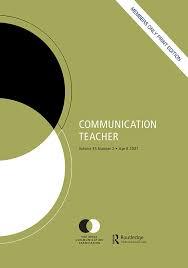John Leach

Lecturer, Communication
Research Expertise
Communication Science
Health Communication
Mass Communication
John Leach is pursuing his Ph.D. in the Department of Communication and is an advisee of Dr. Kang Namkoong. His research focuses largely on emerging media’s potential effect on health communication, with areas of focus including: immersive narratives, body image & eating disorders, and occupational health & safety. John largely deploys quantitative methods to investigate research interests and is committed to using McDonald’s ω instead of Cronbach’s α as a reliability statistic.
He is involved in funded department research efforts in multiple areas: media effects, immersive media, health communication, science communication, and corporate social responsibility. John has presented his research at the International Communication Association and the Association for Education in Journalism and Mass Communication annual conferences and continues to actively pursue his research endeavors.
He received his B.A. in Communication Analysis & Practice from The Ohio State University. He later obtained his M.A. in Mass Communication from Texas Tech University. During his Master’s program his research specialized in media effects on eating disorders, body image, and the pro-anorexic community. Before enrolling in the Department of Communication John worked in the market research industry.
He currently teaches COMM 107 Communication: Principles and Practice & COMM 400 Research Methods in Communication.
Publications
Communication apprehension in the online presentational speaking course: Considerations for synchronous course meetings and asynchronous presentations
Study analyzes qualitative responses (N = 178) to an open-ended survey distributed to undergraduates in presentational speaking courses.
Author/Lead: Victoria LedfordContributor(s): Lindsey Anderson, John Leach, Melissa Lucas, Raphael Mazzone
Non-ARHU Contributor(s): Xiaojing Wang

As institutions of higher education continue to offer online instruction, educators and administrators of presentational speaking courses must adapt their classes for various modes of online delivery. One primary consideration for adapting a presentational speaking course to online delivery is how students will experience communication apprehension and/or public speaking anxiety in online communication contexts. The instructional communication field is rife with research about students’ experiences with speech anxiety and communication apprehension. However, little work has explored how students’ experiences may differ when the primary mode of course communication and course presentations is mediated through either synchronous or asynchronous modes of online communication. If these anxieties in face-to-face settings can deter students’ academic and professional goals (Richmond et al., Communication apprehension, avoidance, and effectiveness [6th ed., Pearson, 2013]), researchers should investigate students’ experiences in online courses. The current study begins to fill this gap. We analyze qualitative responses (N = 178) to an open-ended survey distributed to undergraduates in presentational speaking courses. Thematic analysis revealed the uniqueness of online communication apprehension and its similarities to face-to-face communication apprehension. Implications for administrators and instructors of presentational speaking courses are offered.

